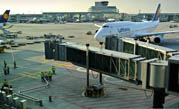Understanding Export Air Freight Costs
Export air freight is a crucial component of international trade, allowing goods to be transported quickly and efficiently across borders. When planning international shipments, understanding air freight costs is essential to ensure profitability and competitiveness. These costs can vary based on several factors, making it important to evaluate them carefully.
One of the primary factors affecting air freight costs is the weight and size of the shipment. Heavier or larger goods typically result in higher costs. Additionally, the distance between the origin and destination can significantly influence expenses, as longer routes often come with higher fuel and labor costs. Seasonal demand can also play a role, with certain times of the year seeing increased shipping volumes that may drive up prices.
Another critical factor is the type of aircraft used. Smaller planes may have higher costs per kilogram, while larger aircraft can sometimes offer better rates for bulky or heavy goods. It's also worth considering the carrier's reputation and reliability, as choosing a trustworthy company can lead to better overall terms and smoother operations.
In conclusion, understanding the various factors that influence export air freight costs is vital for making informed decisions. By evaluating weight, distance, aircraft type, and seasonal demand, businesses can optimize their shipping strategies and ensure cost-effectiveness in their global trade operations. Always consider working with reputable carriers to guarantee a seamless and efficient supply chain.
